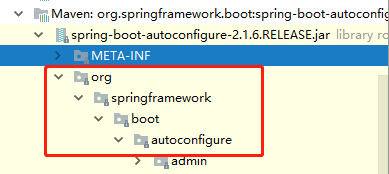
Thymeleaf简介
Thymeleaf是一种用于Web和独立环境的现代服务器端的Java模板引擎。
Thymeleaf的主要目标是将优雅的自然模板带到开发工作流程中,并将HTML在浏览器中正确显示,并且可以作为静态原型,让开发团队能更容易地协作。Thymeleaf能够处理HTML,XML,JavaScript,CSS甚至纯文本。
Thymeleaf使用Spring框架的模块,与许多常见的工具集成在一起,并且可以插入自己的功能,是现代HTML5 JVM Web开发的理想选择,尽管Thymeleaf还有更多其它的功能。
Thymeleaf建立在自然模板的概念之上,以不影响模板作为设计原型的方式将其逻辑注入到模板文件中。 这改善了设计沟通,弥合了前端设计和开发人员之间的理解偏差。
Thymeleaf相关网页
Thymeleaf主要用以与Spring Boot搭配使用,所以这里将介绍Thymeleaf与Spring Boot的联合使用,这里给出以下网页,方便学习:
-
Thymeleaf 官网:https://www.thymeleaf.org/
-
Thymeleaf 在Github 的主页:https://github.com/thymeleaf/thymeleaf
-
Spring官方文档:“https://docs.spring.io/spring-boot/docs/2.1.6.RELEASE/reference/htmlsingle/#using-boot-starter”
Thymeleaf使用
导包
跟其他框架相似的,想要使用Thymeleaf,同样需要导包。这里给出一个对应的版本,可以根据需要下载其他的版本,代码如下:
<!--thymeleaf模板-->
<dependency>
<groupId>org.thymeleaf</groupId>
<artifactId>thymeleaf-spring5</artifactId>
</dependency>
<dependency>
<groupId>org.thymeleaf.extras</groupId>
<artifactId>thymeleaf-extras-java8time</artifactId>
</dependency>
maven会自动下载jar包,可以去依赖看到下载的东西,如图所示:

原理
导入了Thymeleaf之后,为了使用好它,我们需要稍微了解一下它的工作原理。
我们首先得按照SpringBoot的自动配置原理看一下我们这个Thymeleaf的自动配置规则,在按照那个规则,我们进行使用。
我们去找一下Thymeleaf的自动配置类,如图所示:

这个包下可以看到thymeleaf,查看配置类,找到其中的一部分,代码如下:
@ConfigurationProperties(
prefix = "spring.thymeleaf"
)
public class ThymeleafProperties {
private static final Charset DEFAULT_ENCODING;
public static final String DEFAULT_PREFIX = "classpath:/templates/";
public static final String DEFAULT_SUFFIX = ".html";
private boolean checkTemplate = true;
private boolean checkTemplateLocation = true;
private String prefix = "classpath:/templates/";
private String suffix = ".html";
private String mode = "HTML";
private Charset encoding;
}
在该文件中,我们可以在其中看到默认的前缀和后缀!我们只需要把我们的html页面放在类路径下的templates下,thymeleaf就可以帮我们自动渲染了。
使用Thymeleaf什么都不需要配置,只需要将它放在指定的文件夹下即可!
语法
要学习语法,还是参考官网文档最为准确,我们找到对应的版本看一下;
Thymeleaf 官网:https://www.thymeleaf.org/ , 简单看一下官网!还可以下载Thymeleaf的官方文档!这里只简单列出简单的语法语义供于参考。
- 可以使用任意的
th:attr来替换Html中原生属性的值!全部属性都可以参考官网文档#10,如图所示:

- 那么能写哪些表达式呢?可以参考官方文档#4,如下所示:
Simple expressions:(表达式语法)
Variable Expressions: ${...}:获取变量值;OGNL;
1)、获取对象的属性、调用方法
2)、使用内置的基本对象: #18
#ctx : the context object.
#vars: the context variables.
#locale : the context locale.
#request : (only in Web Contexts) the HttpServletRequest object.
#response : (only in Web Contexts) the HttpServletResponse object.
#session : (only in Web Contexts) the HttpSession object.
#servletContext : (only in Web Contexts) the ServletContext object.
${session.foo}
3)、内置的一些工具对象:
#execInfo : information about the template being processed.
#messages : methods for obtaining externalized messages inside variables expressions, in the same way as they would be obtained using #{…} syntax.
#uris : methods for escaping parts of URLs/URIs
#conversions : methods for executing the configured conversion service (if any).
#dates : methods for java.util.Date objects: formatting, component extraction, etc.
#calendars : analogous to #dates , but for java.util.Calendar objects.
#numbers : methods for formatting numeric objects.
#strings : methods for String objects: contains, startsWith, prepending/appending, etc.
#objects : methods for objects in general.
#bools : methods for boolean evaluation.
#arrays : methods for arrays.
#lists : methods for lists.
#sets : methods for sets.
#maps : methods for maps.
#aggregates : methods for creating aggregates on arrays or collections.
#ids : methods for dealing with id attributes that might be repeated (for example, as a result of an iteration).
==============================================================================================
Selection Variable Expressions: *{...}:选择表达式:和${}在功能上是一样;
补充:配合 th:object="${session.user}:
<div th:object="${session.user}">
<p>Name: <span th:text="*{firstName}">Sebastian</span>.</p>
<p>Surname: <span th:text="*{lastName}">Pepper</span>.</p>
<p>Nationality: <span th:text="*{nationality}">Saturn</span>.</p>
</div>
Message Expressions: #{...}:获取国际化内容
Link URL Expressions: @{...}:定义URL;
@{/order/process(execId=${execId},execType='FAST')}
Fragment Expressions: ~{...}:片段引用表达式
<div th:insert="~{commons :: main}">...</div>
Literals(字面量)
Text literals: 'one text' , 'Another one!' ,…
Number literals: 0 , 34 , 3.0 , 12.3 ,…
Boolean literals: true , false
Null literal: null
Literal tokens: one , sometext , main ,…
Text operations:(文本操作)
String concatenation: +
Literal substitutions: |The name is ${name}|
Arithmetic operations:(数学运算)
Binary operators: + , - , * , / , %
Minus sign (unary operator): -
Boolean operations:(布尔运算)
Binary operators: and , or
Boolean negation (unary operator): ! , not
Comparisons and equality:(比较运算)
Comparators: > , < , >= , <= ( gt , lt , ge , le )
Equality operators: == , != ( eq , ne )
Conditional operators:条件运算(三元运算符)
If-then: (if) ? (then)
If-then-else: (if) ? (then) : (else)
Default: (value) ?: (defaultvalue)
Special tokens:
No-Operation: _
示例
注意: 编写前端页面时,需要在html文件中导入命名空间的约束,方便提示。我们可以去官方文档的#3中看一下命名空间拿来过来,代码如下:
xmlns:th="http://www.thymeleaf.org"
练习一
要求: 我们需要查出一些数据,在页面中展示
- 在controller编写一个请求,放进去一些数据,代码如下:
@RequestMapping("/success")
public String success(Model model){
//存入数据
model.addAttribute("msg","Hello,Thymeleaf");
//classpath:/templates/success.html
return "success";
}
- 编写前端页面,代码如下:
<!DOCTYPE html>
<html lang="en" xmlns:th="http://www.thymeleaf.org">
<head>
<meta charset="UTF-8">
<title>a</title>
</head>
<body>
<h1>Success</h1>
<!--th:text就是将div中的内容设置为它指定的值,和之前学习的Vue一样-->
<div th:text="${msg}"></div>
</body>
</html>
练习二
要求: 我们需要查出一些数据,在页面中展示,但这些数据以键值对来存储
- 在controller编写一个请求,放进去一些数据,代码如下:
@RequestMapping("/success2")
public String success2(Map<String,Object> map){
//存入数据
map.put("msg","<h1>Hello</h1>");
map.put("users", Arrays.asList("123","abc"));
//classpath:/templates/success.html
return "success";
}
- 编写前端页面,代码如下:
<!DOCTYPE html>
<html lang="en" xmlns:th="http://www.thymeleaf.org">
<head>
<meta charset="UTF-8">
<title>b</title>
</head>
<body>
<h1>Success</h1>
<div th:text="${msg}"></div>
<!--不转义-->
<div th:utext="${msg}"></div>
<!--遍历数据-->
<!--th:each每次遍历都会生成当前这个标签:官网#9-->
<h4 th:each="user :${users}" th:text="${user}"></h4>
<h4>
<!--行内写法:官网#12-->
<span th:each="user:${users}">[[${user}]]</span>
</h4>
</body>
</html>
Thymeleaf总结
很多Thymeleaf样式,即使现在学习了,也会忘记,所以在学习过程中,需要使用什么,根据官方文档来查询,才是最重要的,要熟练使用官方文档!























 473
473











 被折叠的 条评论
为什么被折叠?
被折叠的 条评论
为什么被折叠?










